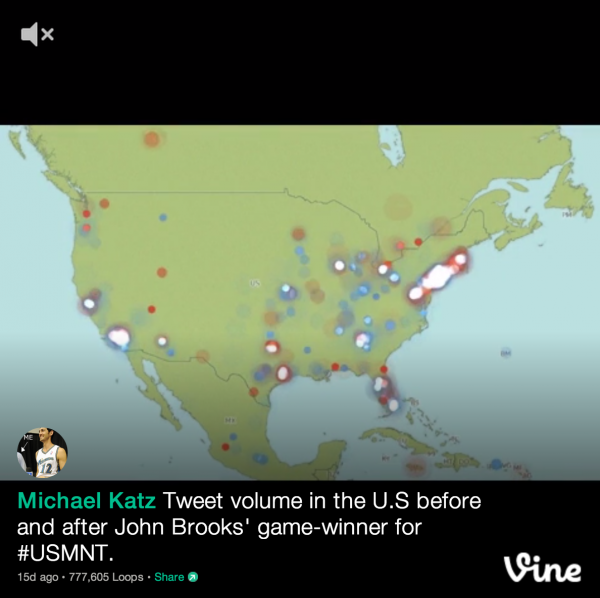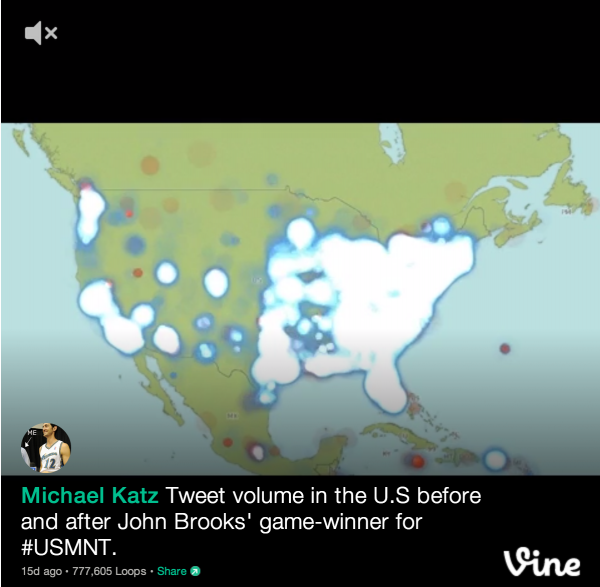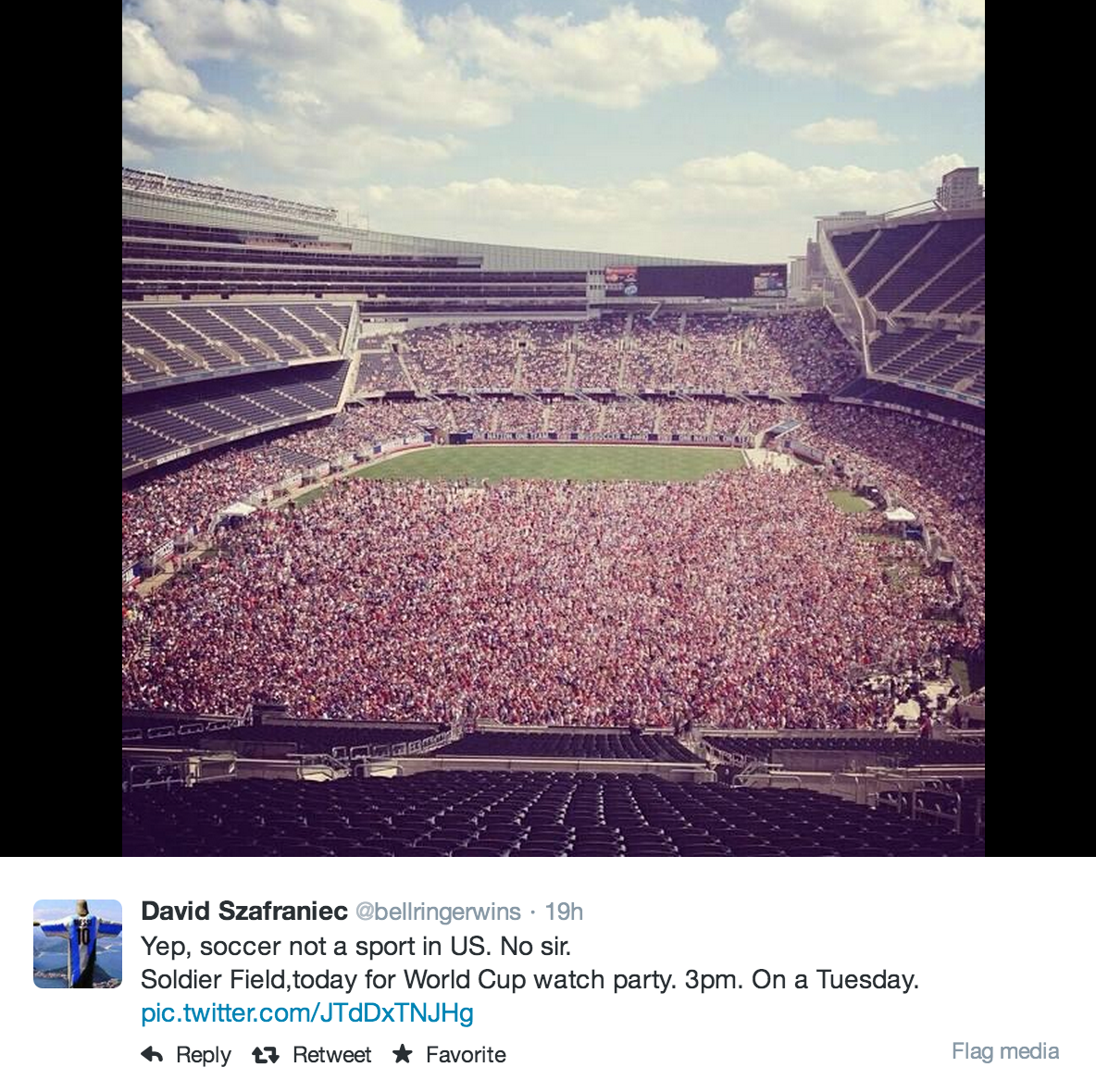Author: Heath Harckham
When the whistle blew after a tense and exciting game between the United States and Belgium in the 2014 World Cup’s final round of 16, U.S. players collapsed on the field–exhausted and defeated–having given their all but coming up short. Yet despite failing to advance, there is plenty of reason for pride and optimism for U.S. soccer.
While the team was defeated at the same stage of the 2010 World Cup in South Africa, this time around they faced a more challenging opposition and far more trying circumstances at the group stage. Placed in the daunting Group D, known by the media and fans as the “Group of Death,” the U.S. managed to advance despite little belief outside of the team and its fans that it could do so. The team’s hard-fought 2-1 loss to a Belgium team brimming with young and talented stars was disappointing, especially considering how close the U.S. came to completing a dramatic extra-time comeback, but the never-say-die mentality of the U.S. players and their unrelenting teamwork made the defeat easier to swallow.
Potential future stars were also a bright spot in the gloom of American defeat. A core young contingent of the squad impressed and look to have bright futures in the U.S. team for years to come. World Cup rookie DeAndre Yedlin impressed in his three substitution appearances, and both John Anthony Brooks and Julian Green, 19 and 21 years old respectively, had brief but impressive competitive debuts for the team; Green beautifully scored the one goal for the U.S.
Perhaps the most encouraging aspect of this game for the future of U.S. soccer, however, is the sport’s growing popularity back home.
While viewership and interest in the national team has increasingly spiked every World Cup, 2014 garnered American enthusiasm and attention like never before. Viewership of the U.S. games consistently broke domestic viewership records. The first match against Ghana, a wildly dramatic U.S. win over their World Cup rivals, was the most watched U.S. men’s soccer game in America ever–until the games against Portugal and Belgium both surpassed that record.

-Before-
In addition to increased television viewership, cities throughout the nation held large public viewing parties for the matches, Soldier Field in Chicago, for example, hosted over 25,000 people for the game against Belgium–and seemingly every bar in the country was packed with attentive fans.
Social Media highlighted the elevated attention in the sport.
Twitter usage during the World Cup peaked when the U.S. played and Google and Facebook reported record trends of World Cup-related searches and posts in America. The U.S. goalkeeper Tim Howard, who set a World Cup record with 16 saves in a single match during the Belgium game became a viral sensation for his heroics.

-After-
Though a constant critique of American interest in international soccer is in its fleeting nature, the expansion of Major League Soccer (MLS)–the premier professional soccer league in the United States and Canada–and the growing U.S. interest in European soccer leagues, suggests that the criticism is misguided. MLS has expanded into three new markets since the 2010 World Cup with two more set to join in 2015. In addition to its improving attendance numbers, the league has recently signed a lucrative T.V. deal, which will give it more national coverage and money than ever before.
The league’s progress can also be marked by its increased influence on the national team. Of the 23 men in the 2014 World Cup roster, seven play in MLS, which is three more than in the 2010 roster. While the league is still working to increase fan participation in some markets, in others like Kansas or in the Pacific Northwest regions of America, soccer culture is already thriving.
 American World Cup players Clint Dempsey and DeAndre Yedlin, for example, play for the Seattle Sounders, a team with a passionate fan base that averages over 44,000 people a game for league matches. The growing exposure and quality of MLS has translated in a rise in quality of the talent pool for our national team, in addition to providing a competitive domestic league in which players can develop and improve their skills, it also acts as a springboard for talented Americans to earn moves to more competitive European leagues, such with Tim Howard, Clint Dempsey and Jozy Altidore. As domestic soccer continues to grow, the opportunities and resources for American players to succeed grow as well.
American World Cup players Clint Dempsey and DeAndre Yedlin, for example, play for the Seattle Sounders, a team with a passionate fan base that averages over 44,000 people a game for league matches. The growing exposure and quality of MLS has translated in a rise in quality of the talent pool for our national team, in addition to providing a competitive domestic league in which players can develop and improve their skills, it also acts as a springboard for talented Americans to earn moves to more competitive European leagues, such with Tim Howard, Clint Dempsey and Jozy Altidore. As domestic soccer continues to grow, the opportunities and resources for American players to succeed grow as well.
The excitement over this 2014 World Cup highlights America’s growing and overdue affection for the world’s favorite pastime. This game alone may not catapult an interest in soccer past any of the other major American sports, such as “American football,” but if it continues its current upward trend, the sport will become popular in the United States more than once every four years.
Comment |

 Share on Facebook
Share on Facebook
 Tweet
Tweet
 Add My Story
Add My Story









